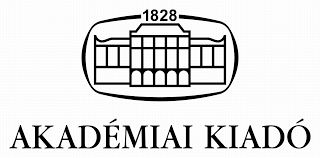Location
Akadémiai Kiadó, founded in 1828 by the Hungarian Academy of Sciences, is Hungary’s oldest continuously operating publishing house. Our mission is to promote Hungarian and international science, that is, to publish the new discoveries in various areas of science, to effectively support information exchange amongst scientists on a global level, and to make scientific results a public property available for all who seek valuable and reliable knowledge.
Our traditions oblige us. Our aim is to become the most significant scientific publishing house of Central and Eastern-Europe whilst maintaining excellent quality, further improving our important scientific and business partnerships, creating scientific, economic and social values and keeping ahead the revolution in communication technology that is reshaping the publishing industry.
Akadémiai Kiadó publishes more than 50 peer-reviewed international journals which represent a score of scientific fields. Most of our journals are indexed in Scopus, and many of them are indexed in the Science Citation Index or in the most important field-specific databases, i.e. Medline/Pubmed, Chemical Abstracts, Biological Abstracts, BIOSIS Previews, etc. The overall citation of our journals has increased annually since 2005.
Co-operating with market-leading subcontractors from all over the world we offer an advanced and excellent on-line service for our authors and readers worldwide.
Members:
Resources
Displaying 6 - 10 of 17Edge expansion of Araucaria forest over southern Brazilian grasslands relies on nurse plant effect
The vegetation in the southern Brazilian highlands is characterized by Araucaria forest and Campos grassland. Evidences indicate that Araucaria forest is currently expanding over grassland and that this expansion may occur by nucleation or edge dynamics. Nucleation mechanisms of Araucaria forest expansion are well documented, whereas mechanisms of expansion starting from the forest edge are not.
Modelling forest bird community richness using CORINE land cover data: a study at the landscape scale in Hungary
In this study we (1) examined the applicability of the widely available CORINE land cover map of Europe in predicting several components of the richness of forest breeding bird community, and (2) analysed how different ecologically meaningful species groups respond to the differences in landscape composition and how these differences are reflected in the relationships between total species richness and richness of these species groups at the 2.5 Ã 2.5 km2 scale.
Antibiotic resistance profiles of soil bacterial communities over a land degradation gradient
This study profiled soils over a land degradation gradient to obtain formulae as integrative measures for describing the gradient as a result of deforestation in Thailand. We applied antibiotic resistance most-probable-number profiling to the soil bacterial communities, and then described the gradient. Soil samples were collected on the gradient represented by dry evergreen forest (the original vegetation), dry deciduous forest (moderately disturbed) and bare ground (the most degraded) in February (dry season), March (shortly after temporal precipitation) and June (rainy season) 2001.
classificatory approach integrating fuzzy set theory and permutation techniques for land cover analysis: a case study on a degrading area of the Rift Valley (Ethiopia)
We suggest a classificatory approach for land cover analysis that integrates fuzzy set theory with permutation techniques. It represents a non parametric alternative and/or a complement of traditional multivariate statistics when data are scarce, missing, burdened with high degree of uncertainty and originated from different sources and/or times. According to this approach, the Operational Geographic Units (OGUs) in which landscape is subdivided and sampled are classified with hierarchical clustering methods.
Semi-natural grasslands under impact of changing land use during last 30 years: Trollio-Cirsietum community in the Liptov region (N Slovakia)
Significant transformation of agriculture took place in Central Europe during the second half of the 20 th century. The paper reviews the nature and consequences of this process in terms of grassland management and land use changes in the Liptov region (N Slovakia) and their impacts on plant communities of fen meadows (Caricion davallianae, Caricion fuscae), wet meadows (Calthion) and mesophilous grasslands (Arrhenatherion, Cynosurion). We studied in detail the changes in structure of the rare plant community Trollio-Cirsietum (Kühn 1937) Oberd.


